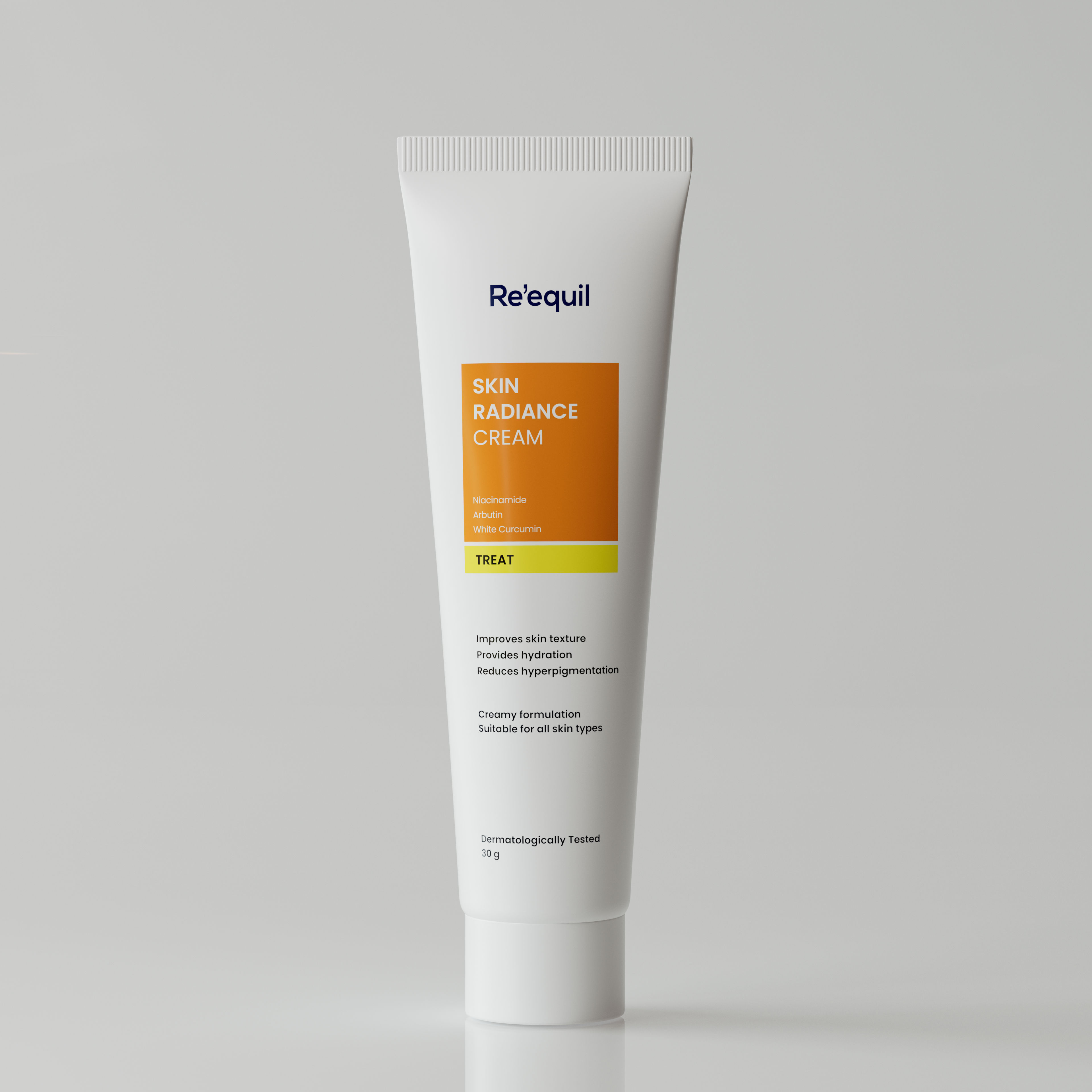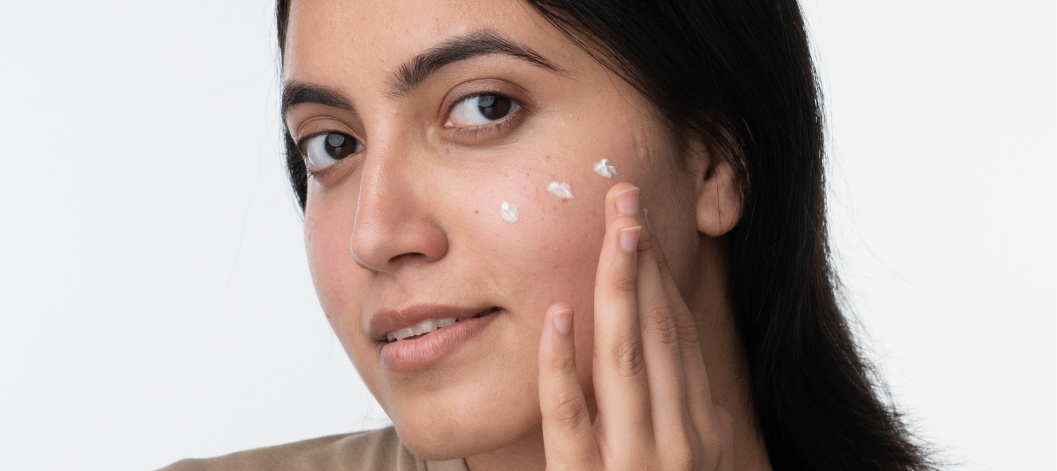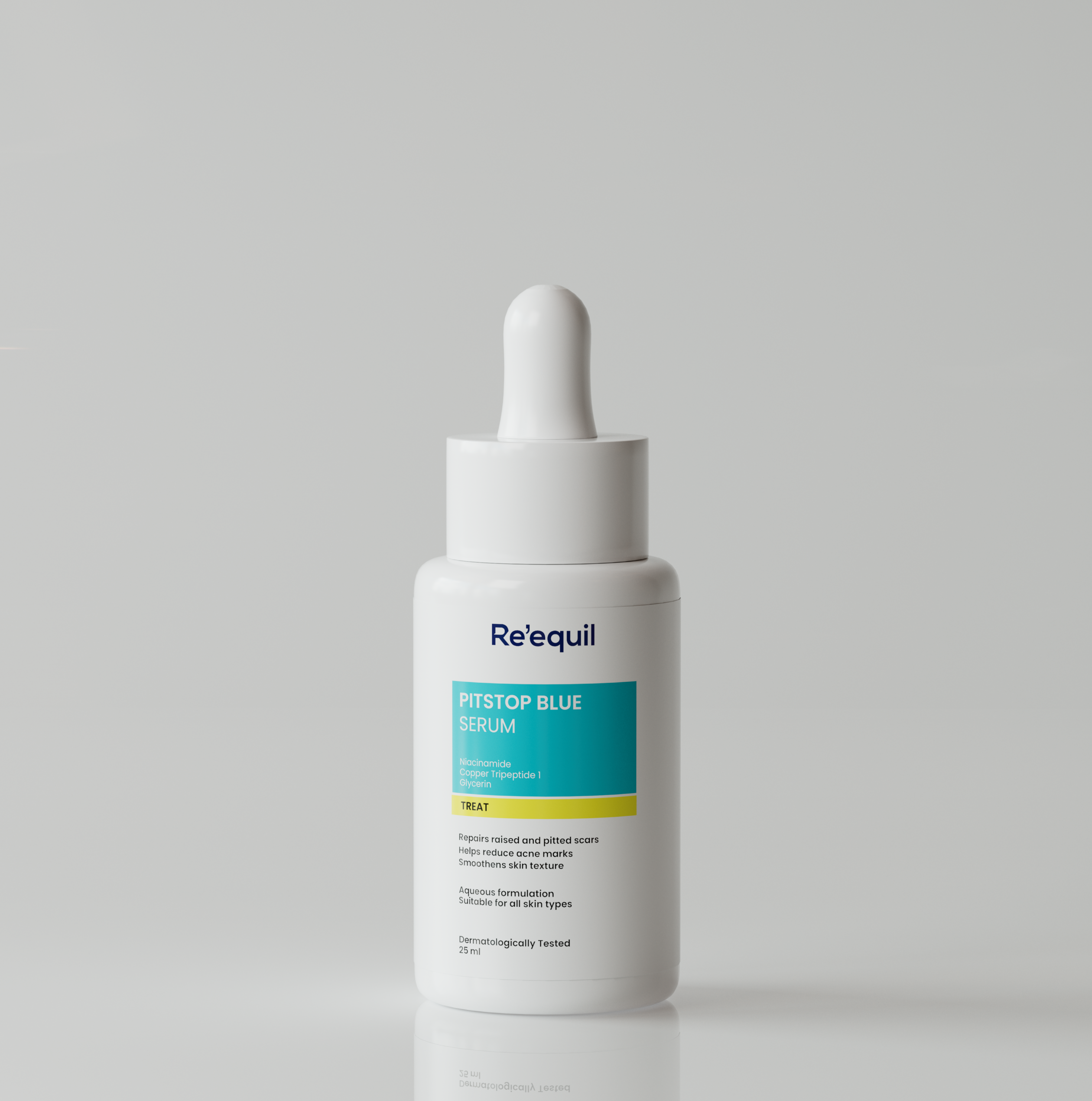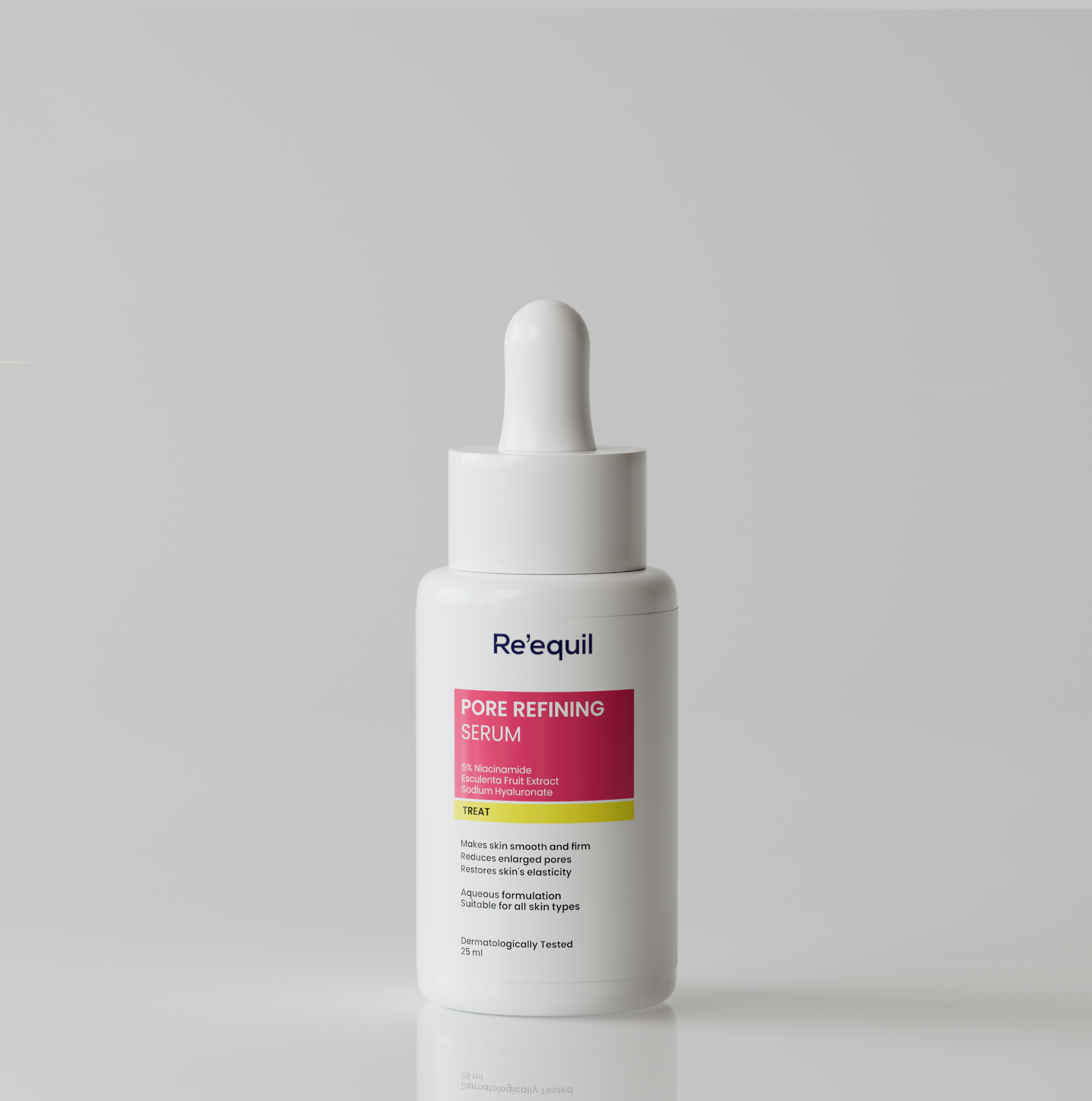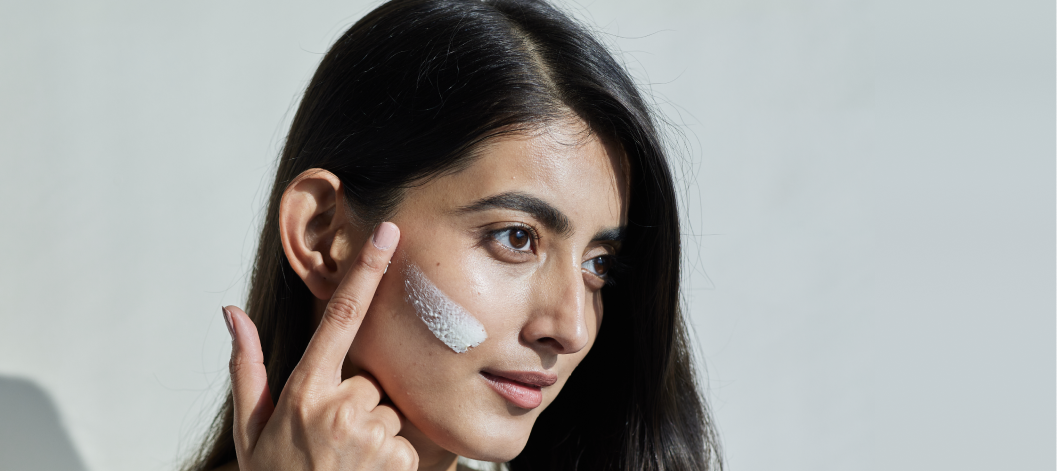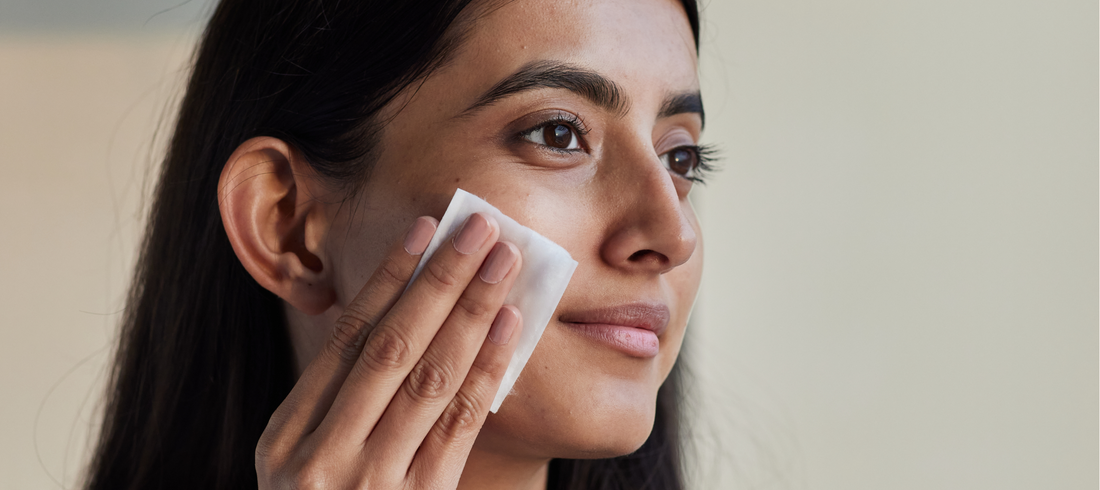Having a combination skin myself, finding the right skincare routine has always been a challenge.
In the pursuit to control the excess shine on my oily T-zone, I somehow ended up aggravating the drier patches on my cheeks—and vice versa sometimes.
If you have a combination skin yourself — I am sure you must have dealt with the same.
But don't worry, I have just the right skincare routine for you. No matter how much percentage of your face is oily and dry, the routine in this post will help you fight the shine off the face while preventing the dry, flaky patches.
What is combination skin?
In simple words, combination skin is oily in some parts of the face and dry in others.
Studies on combination skin show that oily patches and dry areas can appear in different spots on your face.
Commonly, an individual who has combination skin has an oily T-zone (forehead, nose, and chin) and dry cheeks.
Other than genetics, there is no cause of combination skin. It’s just something you are born with.
The oily area on the face may look like this -
- Shiny and greasy
- Enlarged pores
- Breakouts
The dry area on the face may look like this -
- Flaky
- Tightened and rough
- Prone to skin redness
How to find out if you have a combination skin?
Let’s do a small drill to see if you have a combination skin.
And all you need is tissue paper—and a little patience.
So wash your face with a mild cleanser and wait for an hour—and in the meantime, do not apply any skincare product to your skin.
Plus, don’t sit where there is an air conditioner. After an hour, take two tissue papers and stick one onto your t-zone and the other to your cheeks.
If one of the tissues comes out clean and the other has oil stains on it—then you have a combination skin.
You might also notice that your t-zone appears to have some sort of oil or shine on it. Whereas, your cheeks look the complete opposite. In fact, they are a bit rough and tightened.
The most effective skincare routine for combination skin
Oftentimes, people with combination skin pick skincare products that may prevent the excess shine on the face, but exacerbate the dryness.
For example, a moisturiser with hydrating ingredients can soothe the dryness on the face but may make the oily skin (the T-zone area) more shiny and greasy.
The solution to this?
Having a skincare routine that is tailored to the combination skin.
Although it can be a challenge, you can easily find skincare products that make sure each area of your face is given the care it needs.
Taking care of a combination skin is all about the balance between hydration and oil control.
Here is a complete morning and night skincare routine you can follow -
1. Cleanse (Morning and Night). Wash your face with a gentle cleanser. More importantly, don’t use hot or cold water to wash your face. Instead, go for lukewarm water. Since you have both—oily and dry skin—hot water can worsen the oily area whereas cold water can exacerbate the dryness on the face.
2. Apply a toner (Morning and Night). Apply a toner to control excess sebum production, tighten the enlarged pores, and address common combination skin concerns such as dullness and facial redness.
3. Use a Vitamin C serum (Morning and Night). This is probably the most suitable active skincare ingredient for you. Vitamin C will boost the collagen production, brightening the skin.
4. Moisturise (Morning and Night). When picking a moisturiser, the best strategy would be to buy a product that is oil-free but has hydrating skincare ingredients such as Ceramide, Hyaluronic Acid, etc. This will help you prevent the shine on the face while delivering hydration and moisture to the drier areas of the face.
5. Sunscreen (Morning). This is an essential skincare step which everyone should follow regardless of their skin type. Apply a broad-spectrum sunscreen with SPF 50. It will help you protect your skin from the harmful UVA rays.
ALSO READ - Summer Skincare Tips For All Skin Types
Weekly Skincare routine for combination skin
1. Exfoliation (2 to 3 times a week). Regular exfoliation helps keep your skin smooth by removing all the dead skin cells. Although your skin naturally exfoliates itself, meaning it sheds dead skin cells every 30 days. But if those dead skin cells don’t shed, they can either cause acne or make your skin look dull and dry.
Exfoliation will help you speed the cell turnover process and even help regulate sebum production—preventing excess shine on the face. For combination skin, exfoliating 2-3 times per week is ideal.
2. Face mask (once a week). This will help you hydrate and moisturise your skin while removing the excess oil and improving the appearance of your pores. Apply a hydrating facial mask once per week.





